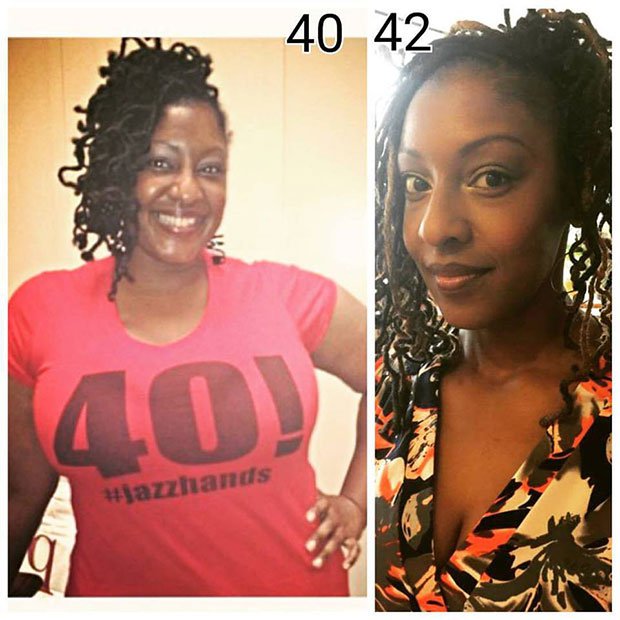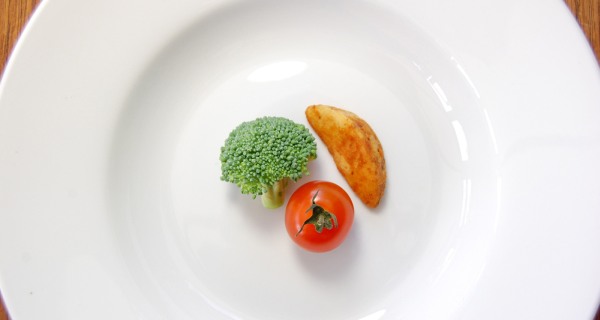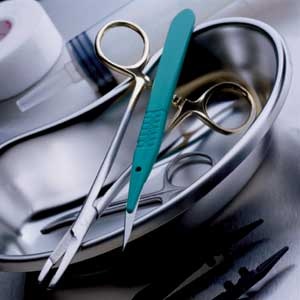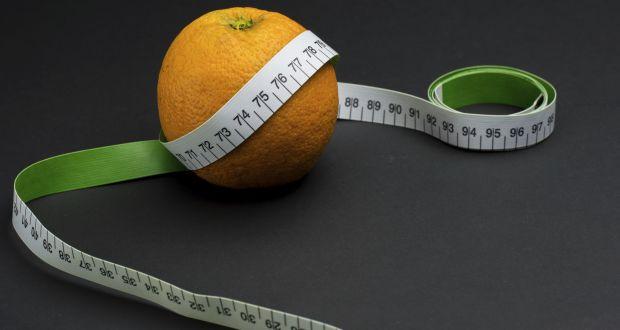How to Eat Meat and Lose Weight
Protein plays a major role in the body and also with weight loss. Lean meat like poultry, eggs, beef, pork and seafood are excellent sources of high quality protein. In the body, protein is essential in the function, structure and regulation of the body's tissues and organs.[1] In regards to weight loss, protein has been shown to be more satisfying (which can lead to decreased food intake) and increase the body's thermogenic capabilities (its ability to burn calories).[2] Although it can aid in weight loss, eating large quantities or servings of protein can still lead to weight gain.[3]
Steps
Method 1 Preparing for Weight Loss
-
1
Schedule an appointment your doctor or registered dietitian. High protein diets (sometimes paired with a low-carb diet) are popular for weight loss. However, they might not be appropriate for all people. Your doctor may be able to provide you with additional guidance or recommend alternatives that might be more appropriate for you.
- High protein diets may have some side effects. Immediate side effects may include: nutritional deficiencies, constipation and headache. Long-term side effects may include: increased risk for heart disease and decreased kidney function.[4]
- A registered dietitian is a nutrition expert that may give you a more effective diet for weight loss or help you include healthy, lean sources of protein into your high-protein, meat-focused weight loss plan. Seeing a dietitian on a regular basis can also help with accountability.
- Visit the EatRight website and click on the orange "Find an Expert" button on the top right to search for a dietitian in your area.
-
2
Write up a meal plan. When you're trying to lose weight, even with a meat-based diet, it's crucial to have a nutritionally balanced meal plan. Writing down a few sample days can help you plan accordingly and help you to include a variety of foods and lean meats.
- Take a few hours of your free time to write up your meal plan. Include lean meat and protein in most or all of your meals.
- Also make sure to include a variety of fruits, vegetables, dairy and 100% whole grains (if you're including these in your diet). Consuming a variety of foods from each food group is essential for a balanced diet.
- Consider your lifestyle as well. If you're busy, on-the-go or have little time to cook, consider purchasing protein or meat that is pre-cooked or frozen for easier meals.
-
3
Understand portion sizes. In order to realize true weight loss benefits, stick to appropriate portion sizes-even with lean meat. Eating portions that are too large may results in excess calories and weight gain.
- One serving of protein is 3 – 4-oz.[5] This is similar in size to the palm of your hand, a deck of cards, or a check book.
- Examples of appropriate protein servings include: 1 small chicken breast or 1/2 large breast, one or two eggs or 1/2 cup of beans.[6]
Method 2 Incorporating Meat into Your Weight Loss Diet
-
1
Purchase lean cuts of meat. Lean proteins are foods that are relatively low in fat and calories per serving.[7] When attempting to lose weight while focusing on meat-based foods, it's important to choose leaner meats over high fat meats the majority of the time. This can help keep your weight and cholesterol in check. Select non-fatty, lean meats such as:
- Seafood. This is an excellent source of protein. Choose shellfish (like shrimp or crab) in addition to finfish (like flounder, tuna or mahimahi). In addition, some fish like salmon or mackerel, contain heart-healthy omega 3-fatty acids which have been shown to decrease the risk for heart disease.[8]
- Poultry. Like turkey and chicken is also a great source of lean protein. Choose skinless, white meat options for the lowest fat content.
- Pork. Most pork has very little fat or marbling throughout the meat.[9] Cut away or remove any excess fat for the lowest fat option.
- Red meat like beef or lamb. These proteins can also be considered a lean - especially if you're choosing lean cuts or 97/3 lean ground items. In addition, lean beef contains an abundance of zinc, iron and vitamin B12.[10]
-
2
Purchase organic meat. Organic meat products, in general, are slightly more expensive than conventionally raised and processed meat products. However, organic meat is free of growth hormones, additives and preservatives.[11]
- Look for the USDA seal of approval, which means that the animal was fed 100% organic food and was free-range.
- Do note that organic meat has no nutritional difference when compared with conventional meat. However, free-range meat is typically higher in omega 3 and 6.
-
3
Incorporate one portion of meat into every meal. Eating a serving of lean meat at every meal or snack will give you the foundation for a weight loss diet focused on meat.
- To maintain a balanced and varied diet, eat a variety of proteins throughout the day. For example, you may have eggs for breakfast, a grilled chicken salad at lunch, beef jerky as a snack and grilled salmon and vegetables for dinner.
- Other foods that are also high in protein (like dairy products, beans or tofu) can be included in some of your meals. Whether you choose to include them will be based on how you create and design your diet.
-
4
Cook meat without additional oils and sauces. Oil and sauces (like marinades or dressings) can contain a significant amount of added fat, sugar and calories. Limit the amount of oil and sauces you cook with to manage the overall calorie content of your meals.
- For the lowest calorie method, lightly brush the meat with a small amount of olive oil prior to cooking it.
- Or, try sautéing lean protein in a non-stick pan with the addition of some no-calorie cooking spray.
- Fresh or dried herbs and citrus are healthful ways to add a lot of flavor to meat dishes without adding a lot of calories or sodium.
- Avoid added excessive amounts of sauce to serve meat with. Even though you may love ketchup or barbecue sauce, both contain a lot of sugar which may counteract your weight loss goals. Instead look for alternatives that contain little to no sugar and calories. You can also try making these sauces from scratch to control the sugar and calories.
-
5
Eat a variety of fruits and vegetables. Fruits and vegetables are essential to a healthy, nutritious and well-balanced diet. Even when choosing a meat-based weight loss diet, it's important to consume adequate amounts of fruits and vegetables each day. These foods are high in fiber, vitamins, minerals and antioxidants that are vital for your health.
- 1 cup of raw or 2 cups of leafy green vegetables are considered a serving.[12] Aim to consume two to three servings daily.[13]
- 1 small whole fruit, 1 cup of sliced fruit and 1/2 cup of dried fruit counts as one serving. Aim to consume one to two servings of fruit daily.[14]
-
6
Eat 100% whole grains. Many weight loss diets that focus on meat or are high protein are also low-carb diets. You may choose to limit how many carbohydrates you consume - especially from the grain group. However, if you choose to consume grains, choose 100% whole grains over processed grains.
- Whole grains are minimally processed and contain all the parts of the grain: the bran, the germ and the endosperm. They are generally higher in fiber, vitamins and minerals compared to more refined grains.[15]
- Whole grain foods include: 100% whole wheat bread or pasta, quinoa, brown rice, barley, or millet.
Method 3 Tracking Your Progress
-
1
Weigh yourself weekly. Weighing yourself regularly when you're trying to lose weight will help you monitor and track your progress and let you know how effective or ineffective your diet program is. Regular weight check-ins will show you your progress over time and may help keep you motivated.
- Weigh yourself about 1-2 times a week. Weighing yourself each day will not give you an accurate perspective of your progress. Daily fluctuations in weight (either a gain or loss) are normal and may be due to what you ate, drank or did at the gym the day before.[16]
- For the most accurate method of weighing, take your weight on the same day of the week, at the same time with the same clothes (or no clothes).
- Regular weigh-ins have also been shown to help prevent weight-gain.[17]
-
2
Reevaluate monthly. With any weight loss plan, it's important to check-in every month or two to see how effective your diet is. Review how much weight you've lost, how much more you'd like to lose and how your new diet is helping you reach your goals.
- If your weight loss is steady or if you've reached your goal, the diet has most likely been successful. Keep on going!
- If your weight loss has been slow or has stopped, take time to reevaluate the diet, how you've been eating and following the plan. It might make sense to keep a food journal for a few days to make sure you're truly sticking to the diet.
- Also take into consideration how easy to follow your diet is and how it's making you feel. For example, if you're finding it overwhelming to have meat at each and every meal, you might want to make some changes to your plan to make it fit better with your lifestyle.
-
3
Build a support group. Support groups can be a great tool for weight loss. Whether it's friends, family members or other dieters, a support group can encourage and motivate you throughout your progress.[18]
- Ask friends or family members if they'd like to join you on your meat-based diet. It's can be more fun if you have a whole group of people with the same goal.
- Get competitive with your support group. Set an end date for your weight loss competition and have an exciting prize for the winner.
-
How to Lose Stomach Fat Without Exercise or Dieting
Losing weight is an extremely popular fitness goal: over half of Amer
-
6 Foods Thin Women Eat Every Day
Seductive, misleading, unhealthy: We're not talking about that bad
-
Are You An Emotional Eater?
Prone to hitting up Dairy Queen after a fight with your significant ot
-
Weight Loss Tips And Secrets That Work
Losing weight can be a difficult thing for people who are troubled by
-
How to Lose Weight
Are you tired of carrying around extra pounds? You can learn the basi
-
Eating salads to lose weight? Pick the right veggies!
- DON'T MISS
- Lose Weight For Good With These Simple Methods
- Weight Loss Surgery Costs
- 9 Slimming Food Swaps To Prevent Summer Weight Gain
- Green Weight Loss Smoothie!
- Late Night Hunger Explainedvar zeus = zeus
- The ABCs Of Losing Weight And Keeping It Off
- Low Calorie Diet Plans that May Work For You
- The Resolution Solution: 7 Goals You Can Meet This Year
- Being Too Nice Could Stall Your Weight Loss
- Can You Really Lose Weight Fasting




